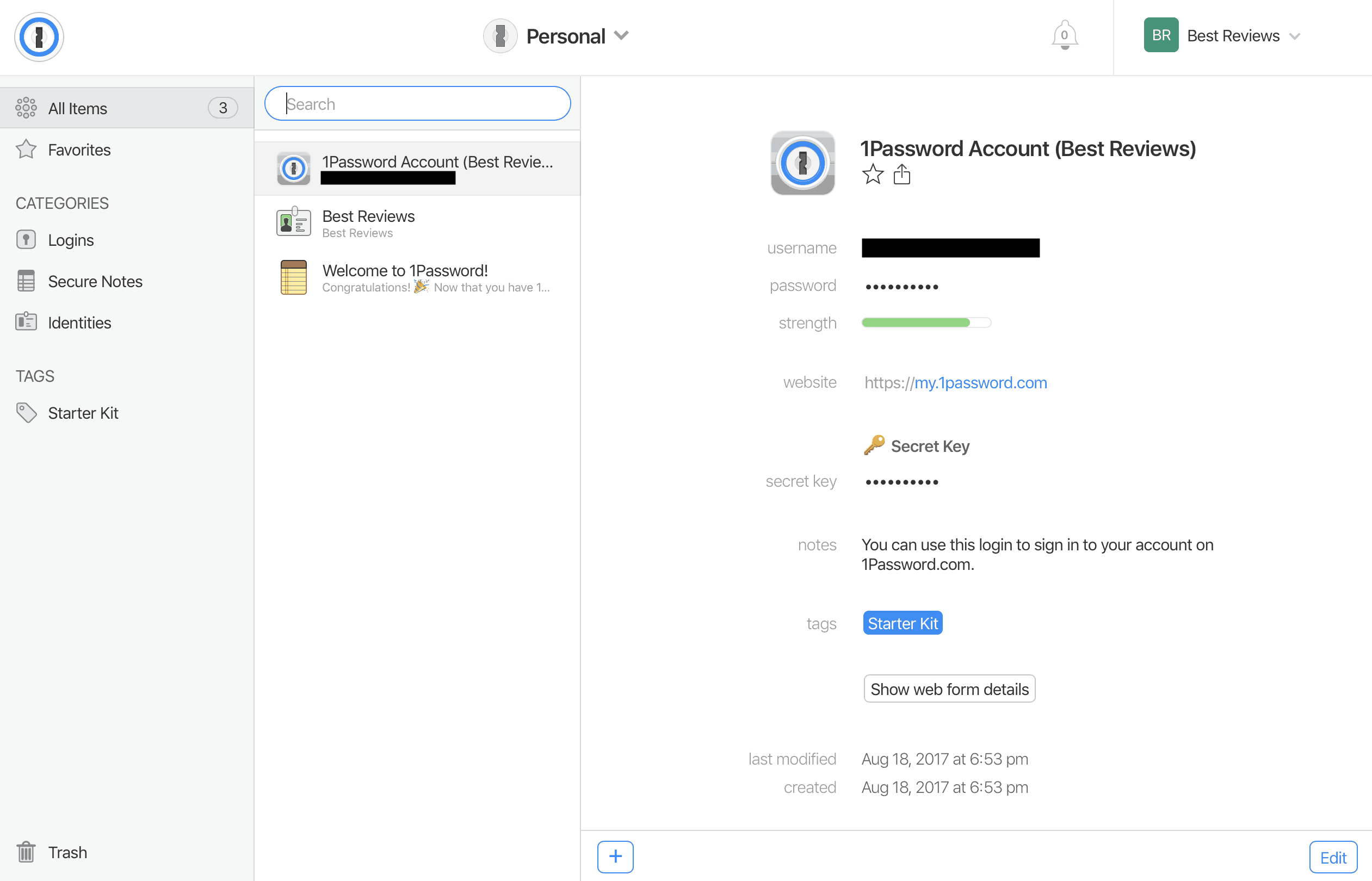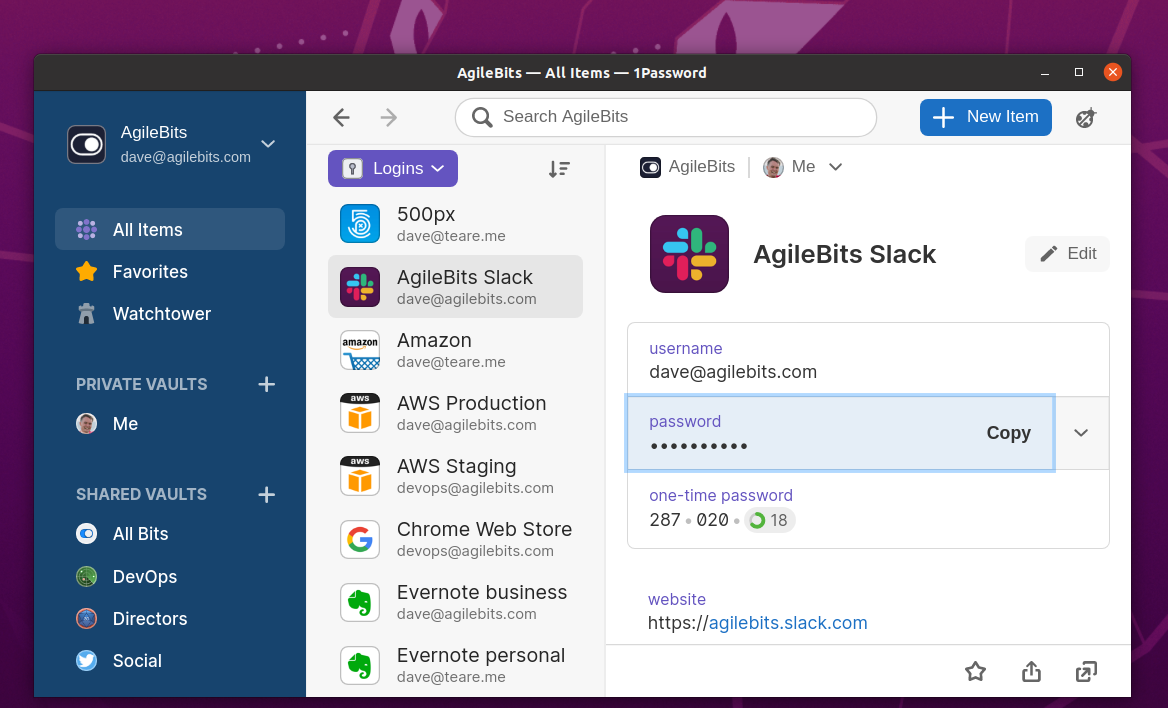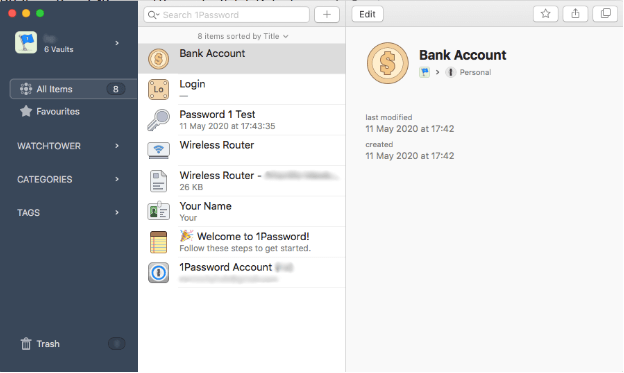- 1password Official Site
- 1password Web Extension
- 1password Compromised Website
- 1password Unsecured Website
1Password does offer a password generator to help you create a strong password when signing up for a new site or updating an existing one. However, the experience is different on the web, Android. 1Password asks for the extension when you open and fill a website from the 1Password desktop app or the 1Password mini.
Job openings at 1Password. Remote (US or Canada) Want to work with us? – Future Openings. Open and unlock 1Password. Tap Settings Watchtower. You’ll see an alert banner at the top of items that need your attention. Items with a compromised website will also appear in the category list. To get alerted when a website you have an account for is added to Watchtower, tap Settings Notifications and turn on “Watchtower alerts”.

1Password is designed to generate, fill, and save passwords on most websites. You shouldn’t have to do anything special to support 1Password on your website, as long as you develop your pages according to best practices. This will make the intention of each page element clear. 1Password will have an easier time understanding your page even when you make changes to it.
Build logical forms
If 1Password has trouble saving or filling on your site, make sure you’re following best practices with your forms:
- Use unique element ids for every field.
- Enclose
<input>fields in<form>elements. - Group related fields (like usernames and passwords) together in the same
<form>element. - Separate unrelated fields into different
<form>elements. For example, put registration and sign-in fields in different forms.
Password change forms
To make the intention of each form element clear on password change forms, ask for the current password, the new password, and a password confirmation in that order.
Provide password requirements
1Password can generate passwords that fit your website’s password requirements. 1Password uses Apple’s Password Manager Resources to identify a website’s unique password rules along with the shared credential backends file in the same repository for multiple domains that share the same account system.
To provide the rules 1Password will use to generate smart passwords, add the following attributes to each <input type='password'> element:
passwordrulesminlengthmaxlength
Embrace accessibility
Making your website accessible benefits everyone who uses your website. As a bonus, making your site accessible provides clues to 1Password as well.
When examining a page, 1Password can take advantage of accessibility cues to locate fields:
Give every field a
<label>element.Use the
forattribute on your labels to associate them with the appropriate field:Use ARIA attributes to annotate form fields. For example, use the
aria-hiddenattribute on fields that aren’t visible.
To improve reliability
Follow these additional guidelines to make sure 1Password will always work with your site, even when you make changes to it:
- Use
placeholderattributes on fields instead of overlays. - Don’t use generated field names and ids.
- Don’t dynamically add or remove fields from the DOM. Reuse fields and hide them when you don’t need them.
- Use
autocompleteattributes on fields. They’re not required, but there may be fields 1Password can’t locate without them.
Get help
Make sure you’re testing with the latest 1Password beta release.
If you’re still having trouble after following the guidelines above, get help from the 1Password Support Community.
1Password works everywhere you do. Easily sign in to sites, use suggested passwords, and find what you need. Everything is available at your fingertips.
Get 1Password for:
If you’re using Safari, get to know 1Password for Safari.
Save a login
To save a login, enter your username and password. Then choose Save in 1Password.
To update an incorrect or incomplete login, make your changes, then choose Save in 1Password and click Update.
1password Official Site
Fill logins and other items

To fill an item, click and choose it.
If 1Password suggests more than one item, you can use the arrow keys to select the one you want.
Or start typing to find it.
Use a suggested password
1Password suggests strong passwords when you’re changing a password or signing up for a new account.
To use a suggested password, click in a password field and choose Use Suggested Password.

Create a custom password
You can use the 1Password pop-up to create custom passwords. To open the pop-up, click in your browser’s toolbar.
To create a custom password, click and choose Password Generator.
Adjust the settings for your new password, then copy it to the clipboard or fill it on the page.
To see all the passwords you’ve created, click Generator History below the password generator.
Search 1Password
Searching is the fastest way to find what you need in 1Password.
To search in 1Password, open the pop-up and start typing.
To cancel the current search, clickor press Esc.
View and edit items
To view an item’s details, click it. Or use the arrow keys to select it.
To mark an item as a favorite, click .
To copy any field, click it.
To open the pop-up in a new window, click .
To show a field in large type, click to the right of it, then click Large.
To reveal a password, click to the right of it, then click Reveal. Or press Control-Option (or Ctrl + Alt) to reveal all passwords in the item details.
To edit an item, click Edit. The item will open in a new tab, where you can add tags or custom fields, move it, or delete it.
Use drag and drop to fill in apps
To fill in an app, drag your login details from 1Password to it. For example, drag your password to the password field in the app.
You can also use drag and drop in your browser. Fill answers to security questions, membership numbers, and more.
Fill two-factor authentication codes
You can use 1Password as an authenticator for a site that supports two-factor authentication. First, find the site on 2fa.directory and follow the instructions to turn on two-factor authentication for the site.
When you see a QR code for 1Password to scan, click to scan it.
Switch accounts and vaults
To see a list of your accounts and vaults, click > Vaults.
To see everything, click All Vaults. To see only the items for a specific account or vault, click it.
To set which vaults are included when you view All Vaults, click next to All Vaults, then adjust the vaults under Accounts and Vaults.
Use Watchtower
Watchtower tells you about password breaches and other security problems on the websites you have saved in 1Password.
If any of your items require action, you’ll see an alert banner with more information at the top of the item in 1Password.
To get alerted when a website you have an account for is added to Watchtower, click > Settings. Then turn on “Watchtower alerts”.
1password Web Extension
Lock 1Password
When you’re done using 1Password in your browser, you can lock it. To lock 1Password, click > Lock 1Password.
1Password will automatically lock when:
- you quit the browser
- you don’t use your computer for a certain amount of time
- your computer sleeps
Manage your settings
To manage your settings, click > Settings. You’ll be able to:
- Change your auto-lock settings
- Check for vulnerable passwords
- Change the language
- Adjust the toolbar button appearance
- Change which item list 1Password opens with
- Allow notifications
- Set a keyboard shortcut to open the pop-up
- Adjust how 1Password behaves on web pages
- Add and remove accounts; adjust All Vaults
- Make 1Password the default password manager
Get help
If you don’t see the 1Password icon in your browser’s toolbar
If the 1Password icon is missing from your browser toolbar, you can customize the toolbar to make it visible.
If your browser’s built-in password manager is interfering with 1Password
If your browser’s built-in password manager is interfering with 1Password, you can turn it off. Click in your browser’s toolbar, then click > Settings, and turn on “Make 1Password the default password manager”.
1password Compromised Website
If you use different passwords for additional 1Password accounts
When you unlock 1Password in your browser, only accounts using the same password are unlocked. To unlock an account that has a different password, lock 1Password, then unlock it using the password for that account.
To make sure you always have access to your 1Password accounts, use the same password for all of them. If you signed up for accounts with different passwords, you can change them.
1password Unsecured Website
Learn more
